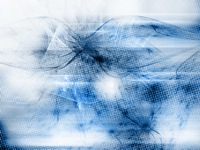Texture
Texture in Materials Science is the distribution of crystallographic orientations of a polycrystalline sample. A sample in which these orientations are fully random is said to have no texture. If the crystallographic orientations are not random, but have some preferred orientation, then the sample has a weak, moderate or strong texture. The degree is dependent on the percentage of crystals having the preferred orientation. Texture is seen in almost all engineered materials, and can have a great influence on material properties. Also, geologic rocks show texture due to their thermo-mechanic history of formation processes.
One extreme case is a complete lack of texture: a solid with perfectly random crystallite orientation will have isotropic properties at length scales sufficiently larger than the size of the crystallites. The opposite extreme is a perfect single crystal, which has anisotropic properties by geometric necessity.[1]
